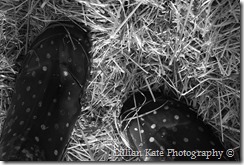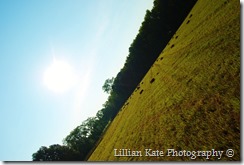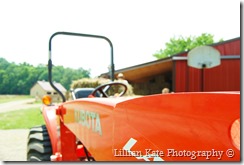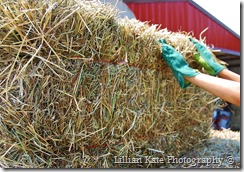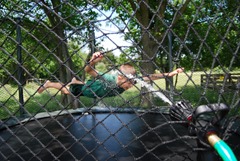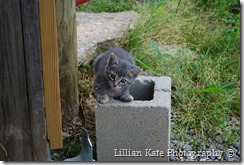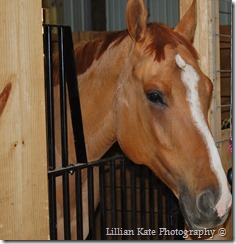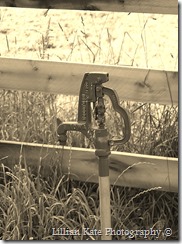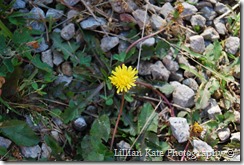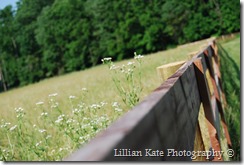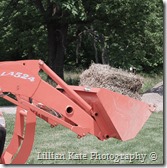 fields collecting the hay from the fields and transferring them to the barn. I drove our tractor while the boys rode in the trailer. Eventually, we got a system that worked successfully: I drove the tractor the to nearest bale of hay, my dad jumped out of the trailer and lifted the hay into it, then we drove off again. (As I stress about how hot and hard farming is, please keep in mind that, while my dad was doing all the heavy physical work, I was getting bitten by little nasty bugs while driving the tractor. Yes, when we had finished I was not sore or tired like my father, yet being in the sun all day really sucks the life out of you.) Anyway, my dad let me keep 6 or 7 bales of hay out in the field for me to jump over with my horse…that was fun :) Since it was around 93 degrees and we were in the full sun most of the day, I now sport a elegant “farmer’s tan.” So, in conclusion, though farming is hot and hard work, it is definitely worth the time and effort. When I look out of my bedroom window and see the hay piled high outside, I can’t help but sigh with satisfaction. Not only did we save money by baling the hay ourselves, but we certainly had fun doing it.
fields collecting the hay from the fields and transferring them to the barn. I drove our tractor while the boys rode in the trailer. Eventually, we got a system that worked successfully: I drove the tractor the to nearest bale of hay, my dad jumped out of the trailer and lifted the hay into it, then we drove off again. (As I stress about how hot and hard farming is, please keep in mind that, while my dad was doing all the heavy physical work, I was getting bitten by little nasty bugs while driving the tractor. Yes, when we had finished I was not sore or tired like my father, yet being in the sun all day really sucks the life out of you.) Anyway, my dad let me keep 6 or 7 bales of hay out in the field for me to jump over with my horse…that was fun :) Since it was around 93 degrees and we were in the full sun most of the day, I now sport a elegant “farmer’s tan.” So, in conclusion, though farming is hot and hard work, it is definitely worth the time and effort. When I look out of my bedroom window and see the hay piled high outside, I can’t help but sigh with satisfaction. Not only did we save money by baling the hay ourselves, but we certainly had fun doing it.
Saturday morning’s sun was beautiful!
My faithful vehicle for the day :) Oh, how I love Kubotas!
Unloading the hay
We used these $1 a piece crates to keep the hay off of the ground.
And so, we ended a day of hard work with a smile on our faces and the sticky evidence of yummy popsicles still on our lips.

